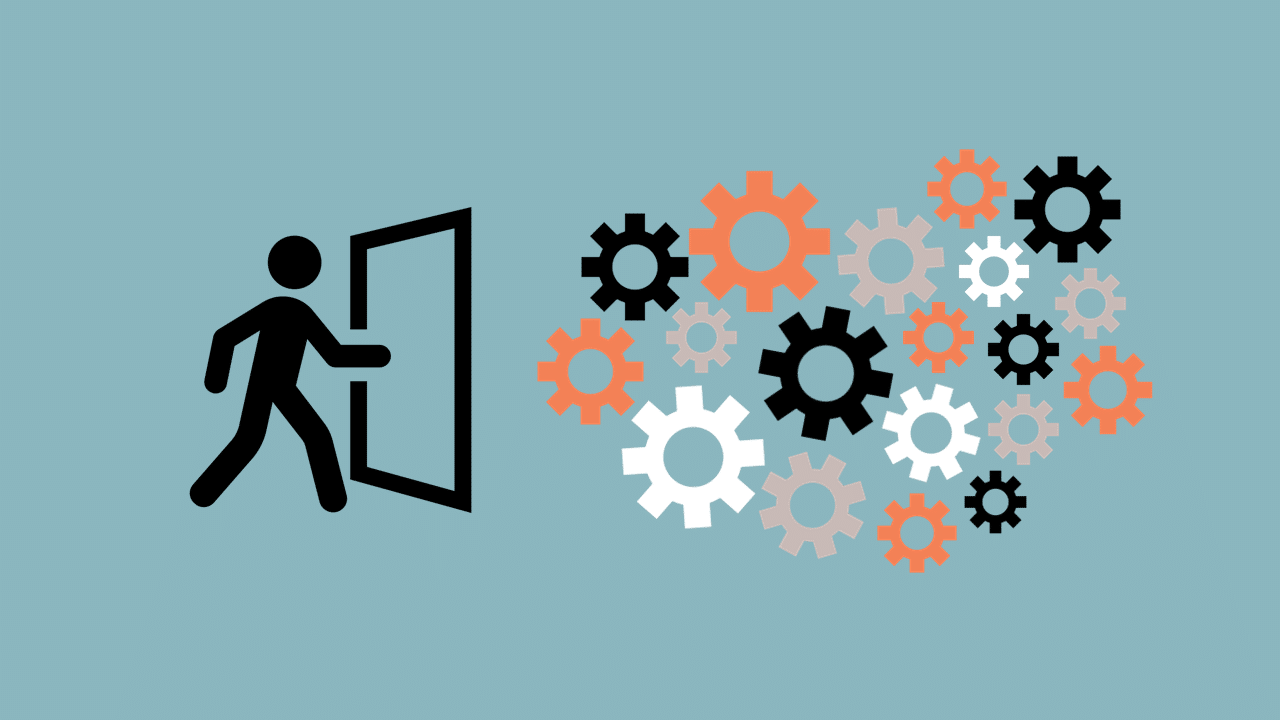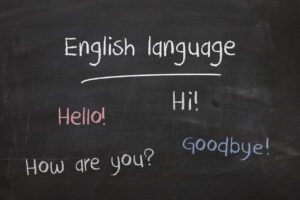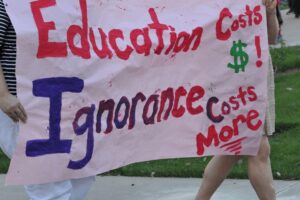
Making Project-Based Learning Accessible for Everyone

Listen to the interview with John Spencer:
Sponsored by Listenwise and EVERFI
In my first year of teaching, my team approached me and asked if I would work with the “more energetic” students on our middle school team during state testing. They told me I had strong classroom management (I didn’t) and I would thrive during the testing period. Initially, I said yes. But then I realized I was toast.
I went to my principal and asked for a solution.
“Your team could redistribute the students more fairly or you could treat it as a chance to try something new.”
“What do you mean?”
“Well, when students are done testing, they’re not going to sit there reading silently. So, what do you want to do?”
I knew I had to create something engaging for them when they finished testing or else the week would become a nightmare. But I also recognized that this was a hidden opportunity. I had a free do-over card I could play if the project tanked.
So I approached the students with an idea. We were going to film a documentary. My students chose the topic. They formed small groups and began researching the topic after they finished taking the standardized test.
What happened next was a mess. I gave mini-lessons on how to conduct interviews, how to shoot video, and how to tell a non-fiction story. I met with students one-on-one to go over how to find more credible sources. We shared scripts back and forth by hand.
Things didn’t go smoothly. A few students didn’t finish their parts. A few of my higher performing students were more frustrated and more afraid than ever before. Others were lost because I hadn’t provided the necessary accommodations.
Still, something emerged from the mess.
My students were different.
Students who had never turned in homework before began voluntarily shooting videos of interviews with immigrants in their neighborhoods. Students who had never asked questions in class were asking hard-hitting interview questions. Students who had once told me, “I’m not very creative” were setting up storyboards and editing videos. What began as a short, one-week project grew into something bigger, with students coming in before and after school to add to their project.
They were making history — literally, by recording interviews, adding their own scripts, finding visuals, and then working collaboratively with other teams to create one larger documentary. This wasn’t a recipe. Each student had created something truly unique.
A few students asked me, “Why can’t we learn like this in our regular social studies class?”
The short answer was fear. I was terrified of losing control, of having chaos in the classroom, and of being judged as a troublemaker by my principal. I was worried about the lack of time and resources. But that tiny little project had changed me as well and I knew I wanted to empower my students through project-based learning.
Who Gets to Do PBL?
At the end of the project, I had my students take a survey about project-based learning. As I looked over the responses, a clear pattern emerged: Every gifted student had done projects before, but none of the English learners or neurodiverse students had.
I knew that PBL could be a powerful way to develop critical competencies in students.
But it turns out that PBL, while powerful, is often structured in ways that exclude students who might need a different approach to thrive. Too often, PBL becomes a space where accommodations and differentiation fall by the wayside. That had been my own mistake with the documentary project.
The good news? We don’t have to abandon PBL or dramatically overhaul it to make it work for diverse learners. By making small but thoughtful structural changes, we can ensure that every student can thrive in a project-based environment.
As we explore these five ideas, I’ll be giving a sample project where fifth grade students design and build a roller coaster while learning about forces and motion.
#1: Manage the Extraneous Cognitive Load Within PBL
Have you ever assigned a three-week project and noticed that students spent the first three days goofing off? Tell a group of students that they’ll be filming a documentary and they might say, “I don’t even know where to start.” Give them a month to write a novel and they might say, “That’s way too much. I’m not sure I can.”
In these moments, students are often hitting cognitive overload. John Sweller, the founder of Cognitive Load Theory, points out that the core approach of PBL, where students are learning through the project, can overwhelm students’ working memory.
However, we can be strategic about how we help students manage cognitive load in PBL. The goal should be to reduce extraneous cognitive load (the mental effort that comes from poorly designed tasks or unnecessary complexity) while simplifying intrinsic load (the complexity of the task itself). We can then help students aim for more attention on the germane load (effort that contributes directly to learning).
The first step we can take is to provide students with a blueprint or schema for the project.
While we don’t want our projects to become recipes, there is a value in having an overall blueprint to follow. Students need to have a sense of where they are going and where they are along the way.
All students benefit from knowing what to expect, but this is especially true of those with executive function challenges. It helps when we break the project down into distinct phases with clear deadlines. You might use a design thinking process such as the LAUNCH Cycle. Each phase is distinct and predictable, with progress building incrementally. This structure minimizes cognitive overload by chunking the learning into manageable steps.
We can then empower students to use visual project management tools, like Kanban boards, SCRUM boards, flowcharts, or visual calendars. This has the added benefit of helping students with executive function challenges learn to visualize time in spatial terms. Meanwhile, English learners gain clarity by seeing where the project is headed. Autistic students benefit from a predictable and clear road map. Students with executive function challenges are less likely to feel overwhelmed when tasks are visually organized and phased out.
We can then help students break down these larger tasks into sub-tasks that they track with a to-do list. You might also incorporate progress bars, numbers, or maps to show a sense of progression from point to point. Students who struggle with self-starting and self-managing can use their to-do lists as a tool to help them stay on task.
It’s a bit like a video game where small, early wins keep you motivated. For students with ADHD, breaking down the project into achievable tasks taps into the Endowed Progress Effect, which is that sense of momentum that comes from seeing tangible progress.
In the roller coaster project, students start by sketching their initial design ideas, using a simple blueprint template that outlines the key phases of the LAUNCH Cycle. Each phase has its own visual checklist on a SCRUM Board, where students move sticky notes as they complete tasks like calculating slope angles, testing track stability, or evaluating the speed of a marble through their coaster.
One group of students, for example, struggled with the initial brainstorming phase. By seeing their ideas move from the “To Do” to “In Progress” column, they felt a boost in motivation and a clearer sense of direction. As they progressed, they used a visual timeline to track each phase, with a progress bar that filled up as they completed each step. This simple structure helped them manage their time effectively and reduced the anxiety that often comes from managing complex, multi-step projects.
As educators, we can implement consistent structures or protocols throughout the PBL process. By being mindful of cognitive load and intentionally simplifying the structure, we create a PBL environment that feels manageable and feasible.
#2: Use a Gradual Release of Responsibility Approach
Another common pitfall in PBL is throwing students into a complex project without adequate preparation. While we might be eager to get students “doing” right away, research from Hattie shows that structured preparation is crucial. He found that inquiry-based learning (closely related to PBL) had a low effect size. However, if teachers did a concept attainment lesson and front-loaded vocabulary in advance, inquiry-based learning actually had a significantly high effect size.
Think of it like preparing a meal. You don’t just start cooking. You gather ingredients, prep your workspace, and make sure you have the right tools. PBL should work the same way.
Before diving into the project, spend time building the necessary skills and knowledge. This might mean starting with the aforementioned concept attainment lesson or vocabulary practice. It could also be a simple roadmap of what the project will look like and some skill practice. The goal is to equip students with enough background knowledge so they feel confident moving forward.
Sometimes the issue isn’t academic so much as choice paralysis. With so many options, students get overwhelmed and hit the previously mentioned cognitive overload. This is why it helps to use a Gradual Release of Responsibility approach within each phase of the project. This allows students to gradually increase their autonomy while also mastering a new skill.
Here’s an example from the research phase of the PBL Unit:
- Day 1: Direct instruction and guided practice. Introduce the core concepts with explicit teaching and examples. As part of the roller coaster project, students learn about Newton’s Laws through a demonstration using a small marble track, observing how inertia, force, and motion impact the marble’s path.
- Day 2: Curated article review, with sentence stems and teacher-driven protocols to scaffold the reading process. Students read an article about how roller coaster loops use Newton’s Third Law. Using sentence stems like, “The roller coaster’s motion changes when…” they discuss how action and reaction forces are at play during a loop.
- Day 3: Students have access to more curated texts, but this time with a choice of protocols, allowing for gradual independence. They choose from articles comparing different roller coaster designs, using a graphic organizer to document how each design illustrates one of Newton’s Laws.
- Day 4: Students begin with one curated text, then transition to self-directed online research. They investigate questions like, “How does friction affect speed on a roller coaster?” and “What safety features use Newton’s First Law?”
- Day 5: Full independence. Students are now curating and synthesizing their research on their own. They compile their findings into a shared document, making connections between Newton’s Laws and their roller coaster prototypes. One group includes a labeled diagram to show how gravity and inertia keep the marble on the track during a sharp turn.
Note that certain students might be ready to be on Day 5 in the first day. This is especially true for many gifted learners who have a higher need for novelty and fluid reasoning. What feels like a scaffold for one student might feel like a cage to another. In these moments, we can allow students who have demonstrated mastery to jump ahead in the research process while still staying with the class on the overall project.
Other students might need additional skill practice. To reinforce these skills, consider interleaving by providing differentiated practice during warm-ups throughout the project. We can also include quick workshops or guided practice sessions for skills that need reinforcement. Here, students still work interdependently with their groups but they can meet with you as a teacher.
The gradual transition from teacher-led to student-driven tasks not only builds confidence but also ensures that students have the tools they need before they are expected to work independently.
#3: Provide Optional Scaffolds
One of the core principles of Universal Design for Learning (UDL) is to offer supports that are available to all students, not just those with identified needs.
In PBL, this means creating a toolbox of optional scaffolds that students can access as needed.
Imagine walking into a classroom where students are working on that roller coaster project. Some might be using interactive chatbots for research help, while others are consulting a vocabulary database or practicing with verb tense formulas relating to the articles they’re reading. A few might be reading leveled texts or using visual diagrams to map out their ideas. The key here is that none of these supports are mandated. They’re simply available, empowering students to choose the tools that work for them.
One group might use an interactive physics simulation to explore how gravity affects speed, while another consults a vocabulary database to define terms like “centripetal force” and “kinetic energy.” Meanwhile, a group struggling with organization might use a visual diagram to plan their roller coaster layout, mapping out where each curve and loop will be.
When we make these scaffolds universally available, we reduce the stigma of needing extra help. More importantly, we cultivate a mindset where students learn to advocate for their own needs and select the tools that best support their learning. In other words, we build student self-direction in a way that honors student agency.
#4: Be Strategic with Grouping
One of the most common challenges in PBL is the issue of grouping. Too often, groups are formed randomly or based purely on friendships, which can lead to uneven participation and frustration. Instead, being intentional with grouping can make a significant difference in the success of the project.
Start by explaining the rationale behind your grouping strategy to the students. In some cases, fully heterogenous groups work best. But other times, you might have students at vastly different skill levels, and it becomes too challenging to find a way to bridge the gap. A better option might be to create three tiers based on skill level and then do mixed skill groups within those tiers. This helps prevent one member of the group from dominating the assignment or project.
So, you might have a student who is #1 with the core skills along with 4, 8, and 12. Another group might have 2, 5, 6, and 10. But a different group might have 25, 28, 31, and 33. This allows you to pull small groups and work with an entire team or add some additional scaffolds to a single group.
It’s also crucial to establish group norms from the outset. PBL expert Trevor Muir integrates these norms into a simple group contract with expectations, roles, and consequences. However, for younger students, a list of norms tends to work best.
Early on in my PBL journey, I learned the hard way not to have students engage in peer grading. I thought it would create a sense of accountability, but it led to unhealthy power dynamics and resentment. By grading students individually, we can focus on individual contributions within the collaborative process.
Sometimes students struggle in groups because they view contributions based on quantity and not quality. It can feel unfair to a high-achieving worker who moves quickly to do more tasks than a student with information processing challenges or with dyslexia, who can work at a high level but might work slower.
Here, we can be strategic with our design. For example, in the previously mentioned roller coaster project, roles are intentionally designed to match students’ strengths and learning needs. One student might take on the role of Materials Manager, ensuring that the right components are gathered and organized, while another becomes the Quality Control Specialist, meticulously testing each section of the track for stability. A student who excels at problem-solving might act as the Project Manager, leading brainstorming sessions and delegating tasks, while a more visual learner could focus on designing the layout. By assigning roles that align with both skills and growth areas, we create a balanced dynamic where every student contributes meaningfully, and no one feels overwhelmed or sidelined.
#5: Provide Additional Processing Time
PBL has a reputation for being loud and chaotic. While that energy can be exciting, it’s also overwhelming for some students. The fast pace can make it difficult for students who need more time to think and process before sharing their ideas.
To combat this, we can build in intentional pauses throughout the project. Start with a quiet warm-up where students can reflect on what they’ve learned or brainstorm ideas. Create designated quiet areas within the classroom where students can retreat to think more deeply about their project. These spaces aren’t for isolation but for processing and planning.
Provide time for students to sketch their ideas before discussing them with the group. During the brainstorming phase of the roller coaster, each student can jot down ideas or create their own sketches first before sharing with a group.
This helps introverts feel more prepared and reduces anxiety around group interactions. For students with ADHD, this priming period allows them to narrow their focus before diving into collaboration. English learners benefit from the extra time to practice their thoughts internally before expressing them aloud.
Giving students the space to think respects diverse processing speeds while also carving out spaces for quiet. Not everyone works well in the spur of the moment. By acknowledging and accommodating this, you not only make PBL more inclusive but also teach students the value of thoughtful reflection as part of problem-solving.
But Is This Still Authentic PBL?
One of the biggest misconceptions about structured PBL is that it somehow makes the process less authentic. But authentic PBL is not about throwing students into the deep end. It’s about equipping them with the skills and supports they need to swim confidently. Allowing students to choose their scaffolds doesn’t make the project easier — it makes it more purposeful. By teaching them to select the tools they need, we empower them to take ownership of their learning.
Real-world relevance doesn’t come from chaos but from intentionality. Authenticity comes from connecting the project to real-world challenges, providing context, and allowing students to engage in meaningful, sustained problem-solving.
Learn more in the PBL Master Course
John has created two excellent online courses to help teachers learn everything they need to launch a project-based-learning unit in their own classrooms. His PBL Introductory Course is a quick, 5-lesson course for beginners, designed to just get you started with project-based learning. The PBL Master Course is a comprehensive course that gives you everything you need to design an authentic PBL unit plan aligned to the standards.
While both courses combined would normally cost $240, but John has bundled them together for $165, and if you use the code pedagogy at checkout, you can get an additional $20 off. Check out this bundle here!
Cult of Pedagogy is an affiliate for this course and receives a commission for all sales through the above links.
Join our mailing list and get weekly tips, tools, and inspiration that will make your teaching more effective and fun. You’ll get access to our members-only library of free downloads, including 20 Ways to Cut Your Grading Time in Half, the e-booklet that has helped thousands of teachers save time on grading. Over 50,000 teachers have already joined—come on in.




